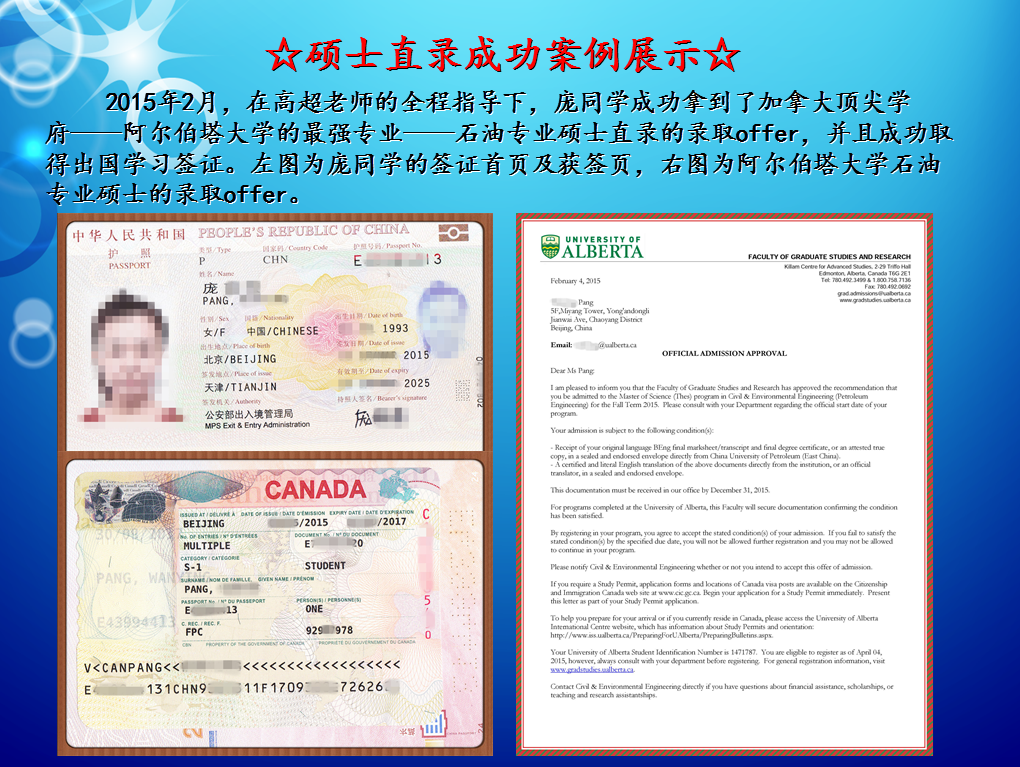GMAT阅读材料30(附答案).
2017-08-11 213阅读
以下继续为大家更新澳际留学为大家收集整理的GMAT阅读材料,希望能够帮助大家复习备考GMAT考试。以下GMAT阅读材料可以做GMAT阅读模拟题使用,每篇都附有题目和答案,供大家参考使用。澳际留学祝大家GMAT考试顺利!
Since the early 1970’s, historians have begun to devote serious attention to the working class in the United States. Yet while we now have studies of working-class communities and culture, we know(5) remarkably little of workless ness. When historians have paid any attention at all to unemployment, they have focused on the Great Depression of the 1930’s. The narrowness of this perspective ignores the pervasive recessions and joblessness of the previous decades, as(10)Alexander Keyssar shows in his recent book. Examining the period 1870-1920, Keyssar concentrates on Massachusetts, where the historical materials are particularly rich, and the findings applicable to other industrial areas.(15 )
The unemployment rates that Keyssar calculates appear to be relatively modest, at least by Great Depression standards: during the worst years, in the 1870’s and 1890’s, unemployment was around 15 percent. Yet Keyssar rightly understands that a better way to (20) measure the impact of unemployment is to calculate unemployment frequencies—measuring the percentage of workers who experience any unemployment in the course of a year. Given this perspective, joblessness looms much larger.(25)Keyssar also scrutinizes unemployment patterns according to skill level, ethnicity, race, age, class, and gender. He finds that rates of joblessness differed primarily according to class: those in middle-class and white-collar occupations were far less likely to be unem-(30)ployed. Yet the impact of unemployment on a specific class was not always the same. Even when dependent onthe same trade, adjoining communities could have dramatically different unemployment rates. Keyssar uses these differential rates to help explain a phenomenon(35)that has puzzled historians—the startlingly high rate of geographical mobility in the nineteenth-century United States. But mobility was not the dominant working-class strategy for coping with unemployment, nor was assistance from private charities or state agencies. Self-help(40) and the help of kin got most workers through jobless spells.
While Keyssar might have spent more time developing the implications of his findings on joblessness for contemporary public policy, his study, in its thorough(45) research and creative use of quantitative and qualitative evidence, is a model of historical analysis.
1. The passage is primarily concerned with
(A) recommending a new course of investigation
(B) summarizing and assessing a study
(C) making distinctions among categories
(D) criticizing the current state of a field
(E) comparing and contrasting two methods for calculating data
2. The passage suggests that bore the early 1970’s, which of the following was true of the study by historians of the working class in the United States?
(A) The study was infrequent or superficial, or both.
(B) The study was repeatedly criticized for its allegedly narrow focus.
(C) The study relied more on qualitative than quantitative evidence.
(D) The study focused more on the working-class community than on working-class culture.
(E) The study ignored working-class joblessness during the Great Depression.
3. According to the passage, which of the following is true of Keyssar’s findings concerning unemployment in Massachusetts?
(A) They tend to contradict earlier findings about such unemployment.
(B) They are possible because Massachusetts has the most easily accessible historical records.
(C) They are the first to mention the existence of high rates of geographical mobility in the nineteenth century.
(D) They are relevant to a historical understanding of the nature of unemployment in other states.
(E) They have caused historians to reconsider the role of the working class during the Great Depression.
4. According to the passage, which of the following is true of the unemployment rates mentioned in line 15
(A) They hovered, on average, around 15 percent during the period 1870-1920.
(B) They give less than a full sense of the impact of unemployment on working-class people.
(C) They overestimate the importance of middle class and white-collar unemployment.
(D) They have been considered by many historians to underestimate the extent of working-class unemployment.
(E) They are more open to question when calculated for years other than those of peak recession.
5. Which of the following statements about the unemployment rate during the Great Depression can be inferred from the passage?
(A) It was sometimes higher than 15 percent.
(B) It has been analyzed seriously only since the early 1970’s.
(C) It can be calculated more easily than can unemployment frequency.
(D) It was never as high as the rate during the 1870’s.
(E) It has been shown by Keyssar to be lower than previously thought.
6. According to the passage, Keyssar considers which of the following to be among the important predictors of the likelihood that a particular person would be unemployed in late nineteenth-century Massachusetts?
Ⅰ. The person’s class
Ⅱ. Where the person lived or worked
Ⅲ. The person’s age
(A) Ⅰonly
(B) Ⅱonly
(C) Ⅰand Ⅱ only
(D) Ⅰand Ⅲ only
(E) Ⅰ,Ⅱ, and Ⅲ
7. The author views Keyssar’s study with
(A) impatient disapproval
(B) wary concern
(C) polite skepticism
(D) scrupulous neutrality
(E) qualified admiration
8. Which of the following, if true, would most strongly support Keyssar’s findings as they are described by the author?
(A) Boston, Massachusetts, and Quincy, Massachusetts, adjoining communities, had a higher rate of unemployment for working-class people in 1870 than in 1890.
(B) White-collar professionals such as attorneys had as much trouble as day laborers in maintaining a steady level of employment throughout the period 1870-1920.
(C) Working-class women living in Cambridge, Massachusetts, were more likely than working-class men living in Cambridge to be unemployed for some period of time during the year 1873.
(D) In the 1890’s, shoe-factory workers moved away in large numbers from Chelmsford, Massachusetts, where shoe factories were being replaced by other industries, to adjoining West Chelmsford, where the shoe industry flourished.
(E) In the late nineteenth century, workers of all classes in Massachusetts were more likely than workers of all classes in other states to move their place of residence from one location to another within the state.
以上澳际留学持续为大家更新我们收集整理的GMAT阅读材料,希望能够为大家的GMAT考试备考提供帮助,祝同学们分数高高,顺利出国!
GMAT阅读材料30(附答案)GMAT阅读材料GMAT阅读材料GMAT阅读材料以下继续为大家更新澳际留学为大家收集整理的GMAT阅读材料,希望能够帮助大家复习备考GMAT考试。以下GMAT阅读材料可以做GMAT阅读模拟题使用,每篇都附有题目和答案,供大家参考使用。澳际留学祝大家GMAT考试顺利!
Since the early 1970’s, historians have begun to devote serious attention to the working class in the United States. Yet while we now have studies of working-class communities and culture, we know(5) remarkably little of workless ness. When historians have paid any attention at all to unemployment, they have focused on the Great Depression of the 1930’s. The narrowness of this perspective ignores the pervasive recessions and joblessness of the previous decades, as(10)Alexander Keyssar shows in his recent book. Examining the period 1870-1920, Keyssar concentrates on Massachusetts, where the historical materials are particularly rich, and the findings applicable to other industrial areas.(15 )
The unemployment rates that Keyssar calculates appear to be relatively modest, at least by Great Depression standards: during the worst years, in the 1870’s and 1890’s, unemployment was around 15 percent. Yet Keyssar rightly understands that a better way to (20) measure the impact of unemployment is to calculate unemployment frequencies—measuring the percentage of workers who experience any unemployment in the course of a year. Given this perspective, joblessness looms much larger.(25)Keyssar also scrutinizes unemployment patterns according to skill level, ethnicity, race, age, class, and gender. He finds that rates of joblessness differed primarily according to class: those in middle-class and white-collar occupations were far less likely to be unem-(30)ployed. Yet the impact of unemployment on a specific class was not always the same. Even when dependent onthe same trade, adjoining communities could have dramatically different unemployment rates. Keyssar uses these differential rates to help explain a phenomenon(35)that has puzzled historians—the startlingly high rate of geographical mobility in the nineteenth-century United States. But mobility was not the dominant working-class strategy for coping with unemployment, nor was assistance from private charities or state agencies. Self-help(40) and the help of kin got most workers through jobless spells.
While Keyssar might have spent more time developing the implications of his findings on joblessness for contemporary public policy, his study, in its thorough(45) research and creative use of quantitative and qualitative evidence, is a model of historical analysis. 上1234下
共4页
阅读全文留学咨询
更多出国留学最新动态,敬请关注澳际教育手机端网站,并可拨打咨询热线:400-601-0022
留学热搜
相关推荐
- 专家推荐
- 成功案例
- 博文推荐

Copyright 2000 - 2020 北京澳际教育咨询有限公司
www.aoji.cn All Rights Reserved | 京ICP证050284号
总部地址:北京市东城区 灯市口大街33号 国中商业大厦2-3层









高国强 向我咨询
行业年龄 12年
成功案例 3204人
留学关乎到一个家庭的期望以及一个学生的未来,作为一名留学规划导师,我一直坚信最基本且最重要的品质是认真负责的态度。基于对学生和家长认真负责的原则,结合丰富的申请经验,更有效地帮助学生清晰未来发展方向,顺利进入理想院校。
Tara 向我咨询
行业年龄 7年
成功案例 1869人
薛占秋 向我咨询
行业年龄 11年
成功案例 1869人
从业3年来成功协助数百同学拿到英、美、加、澳等各国学习签证,递签成功率90%以上,大大超过同业平均水平。
Cindy 向我咨询
行业年龄 19年
成功案例 5073人
精通各类升学,转学,墨尔本的公立私立初高中,小学,高中升大学的申请流程及入学要求。本科升学研究生,转如入其他学校等服务。